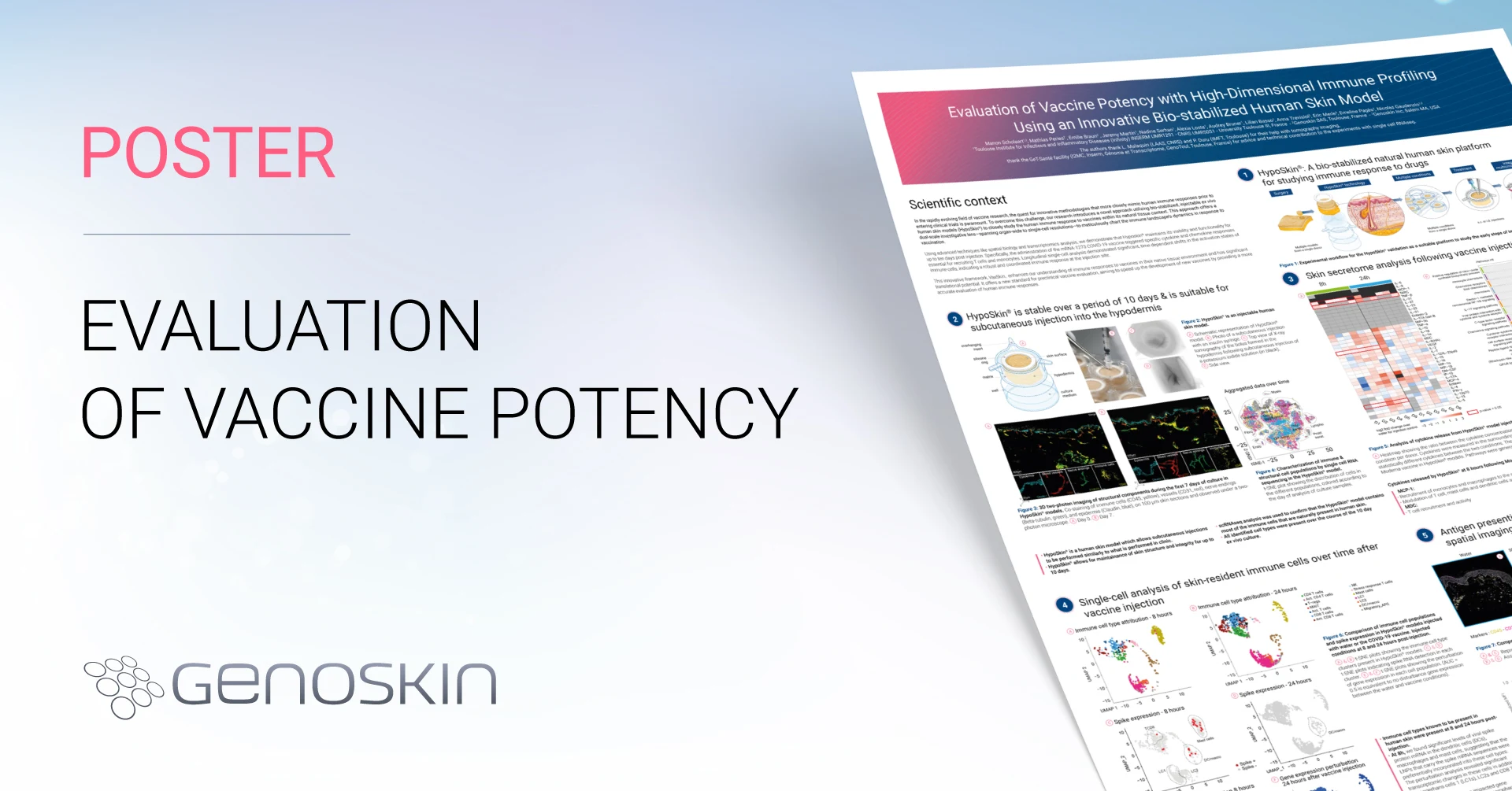Vaccine Development
Evaluation of Vaccine Potency with High-Dimensional Immune Profiling Using an Innovative Bio-stabilized Human Skin Model
Research by M. Scholaert1,2, M. Peries2, E. Braun2, J. Martin1, N. Serhan1, A. Loste1, A. Bruner1, L. Basso1, E. Merle2, A. Trevisiol2, E. Pagès2 and N. Gaudenzio1,2
1Toulouse Insitute for Infectious and Inflammatory Diseases (Infinity), 2Genoskin
Scientific Context

In the rapidly evolving field of vaccine research, the quest for innovative methodologies that more closely mimic human immune responses prior to entering clinical trials is paramount. To overcome this challenge, our research introduces a novel approach utilizing bio-stabilized, injectable ex vivo human skin models (HypoSkin®) to closely study the human immune response to vaccines within its natural tissue context. This approach offers a dual-scale investigative lens—spanning organ-wide to single-cell resolutions—to meticulously chart the immune landscape’s dynamics in response to vaccination.
Using advanced techniques like spatial biology and transcriptomics analysis, we demonstrate that Hyposkin® maintains its viability and functionality for up to ten days post-injection. Specifically, the administration of the mRNA-1273 COVID-19 vaccine triggered specific cytokine and chemokine responses essential for recruiting T cells and monocytes. Longitudinal single-cell analysis demonstrated significant, time-dependent shifts in the activation states of immune cells, indicating a robust and coordinated immune response at the injection site.
This innovative framework, VaxSkin®, enhances our understanding of immune responses to vaccines in their native tissue environment and has significant translational potential. It offers a new standard for preclinical vaccine evaluation, aiming to speed up the development of new vaccines by providing a more accurate evaluation of human immune responses.
Please fill in the form below to access our poster.
After submitting this form, you will receive an email with the link to access our poster.
Comments are closed.






